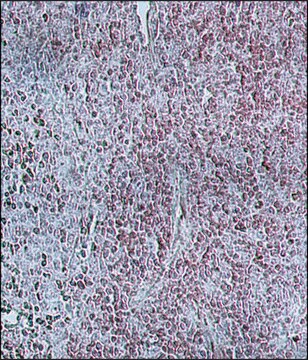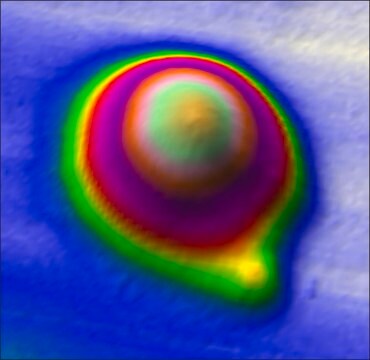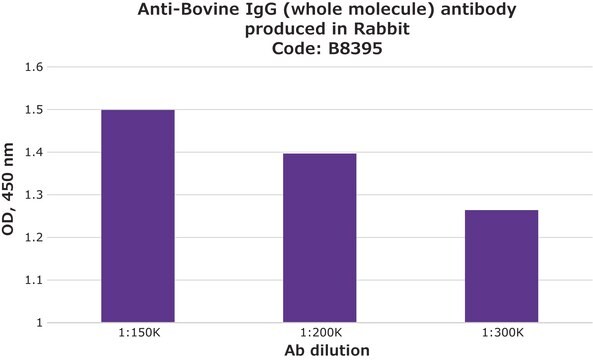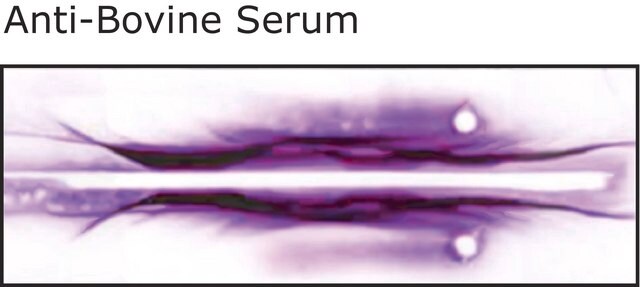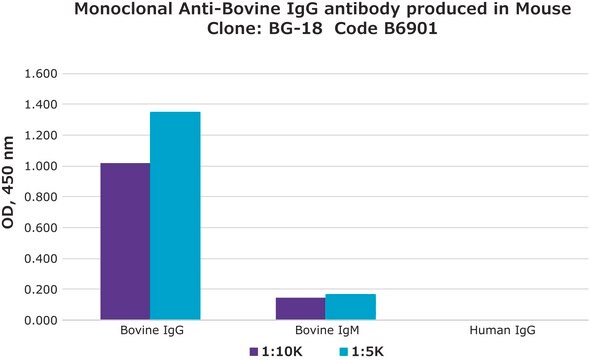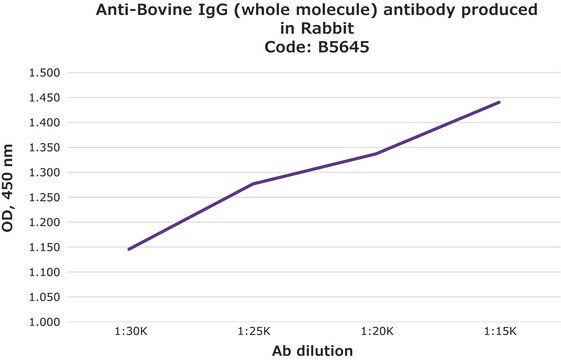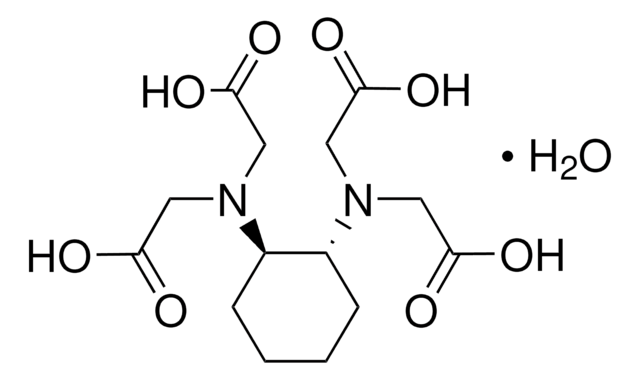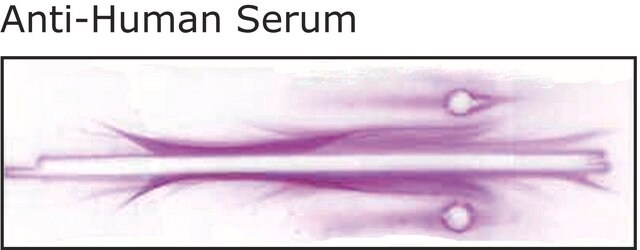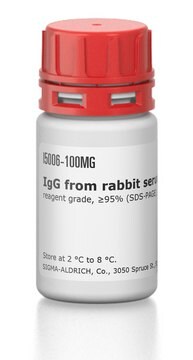B1645
Anti-Bovine IgG (whole molecule) antibody produced in goat
whole antiserum
Autenticatiper visualizzare i prezzi riservati alla tua organizzazione & contrattuali
About This Item
Prodotti consigliati
Origine biologica
goat
Livello qualitativo
Coniugato
unconjugated
Forma dell’anticorpo
whole antiserum
Tipo di anticorpo
secondary antibodies
Clone
polyclonal
contiene
15 mM sodium azide
tecniche
quantitative precipitin assay: 2.8 mg/mL
Condizioni di spedizione
dry ice
Temperatura di conservazione
−20°C
modifica post-traduzionali bersaglio
unmodified
Descrizione generale
IgG antibody subtype is the most abundant of serum immunoglobulins of the immune system. It is secreted by B cells and is found in blood and extracellular fluids.
Specificità
The antiserum shows a single arc of precipitation versus bovine serum and bovine IgG by immunoelectrophoresis (IEP). This antiserum has not been assayed for interspecies cross reactivity.
Applicazioni
Anti-Bovine IgG (whole molecule) antibody produced in goat has been used in:
- quantitative precipitation assays and in various immunosensor methods to detect bovine IgG in serum and milk
- immuno-reaction assay
- indirect sandwich enzyme linked immunosorbent assay (ELISA)
It has also been used in immuno-reaction assay.
Azioni biochim/fisiol
IgG antibody subtype is the most abundant of serum immunoglobulins of the immune system. It is secreted by B cells and is found in blood and extracellular fluids and provides protection from infections caused by bacteria, fungi and viruses. Maternal IgG is transferred to fetus through the placenta that is vital for immune defense of the neonate against infections.
Stato fisico
Supplied as a liquid with 0.1% sodium azide (see MSDS) as a preservative.
Nota sulla preparazione
treated to remove lipoproteins
Stoccaggio e stabilità
For continuous use, store at 0-5 °C. For extended storage, solution may be frozen in working aliquots. Repeated freezing and thawing is not recommended. Storage in "frost-free" is not recommended. If slight turbidity occurs upon prolonged storage, clarify by centrifugation before use.
Esclusione di responsabilità
Unless otherwise stated in our catalog or other company documentation accompanying the product(s), our products are intended for research use only and are not to be used for any other purpose, which includes but is not limited to, unauthorized commercial uses, in vitro diagnostic uses, ex vivo or in vivo therapeutic uses or any type of consumption or application to humans or animals.
Non trovi il prodotto giusto?
Prova il nostro Motore di ricerca dei prodotti.
Codice della classe di stoccaggio
10 - Combustible liquids
Classe di pericolosità dell'acqua (WGK)
nwg
Punto d’infiammabilità (°F)
Not applicable
Punto d’infiammabilità (°C)
Not applicable
Scegli una delle versioni più recenti:
Possiedi già questo prodotto?
I documenti relativi ai prodotti acquistati recentemente sono disponibili nell’Archivio dei documenti.
I clienti hanno visto anche
Mauro Tomassetti et al.
Journal of pharmaceutical and biomedical analysis, 73, 90-98 (2012-05-09)
Within the framework of research carried out by our team aimed at developing new immunological methods to determine proteins such as immunoglobulins G in different biological matrixes, for instance, serum and milk, tests were performed on several immunosensors based on
Bismuth film electrode as sensing platform for IgE-anti-IgE interactions
Anik U, et al.
Electroanalysis, 23(10), 2379-2385 (2011)
IL-21-induced isotype switching to IgG and IgA by human naive B cells is differentially regulated by IL-4
Avery DT, et al.
Journal of Immunology, 181(3), 1767-1779 (2008)
Placental transfer of IgG subclasses in a Japanese population.
Hashira S, et al.
Pediatrics International, 42(4) (2000)
Gestur Vidarsson et al.
Frontiers in immunology, 5, 520-520 (2014-11-05)
Of the five immunoglobulin isotypes, immunoglobulin G (IgG) is most abundant in human serum. The four subclasses, IgG1, IgG2, IgG3, and IgG4, which are highly conserved, differ in their constant region, particularly in their hinges and upper CH2 domains. These
Il team dei nostri ricercatori vanta grande esperienza in tutte le aree della ricerca quali Life Science, scienza dei materiali, sintesi chimica, cromatografia, discipline analitiche, ecc..
Contatta l'Assistenza Tecnica.